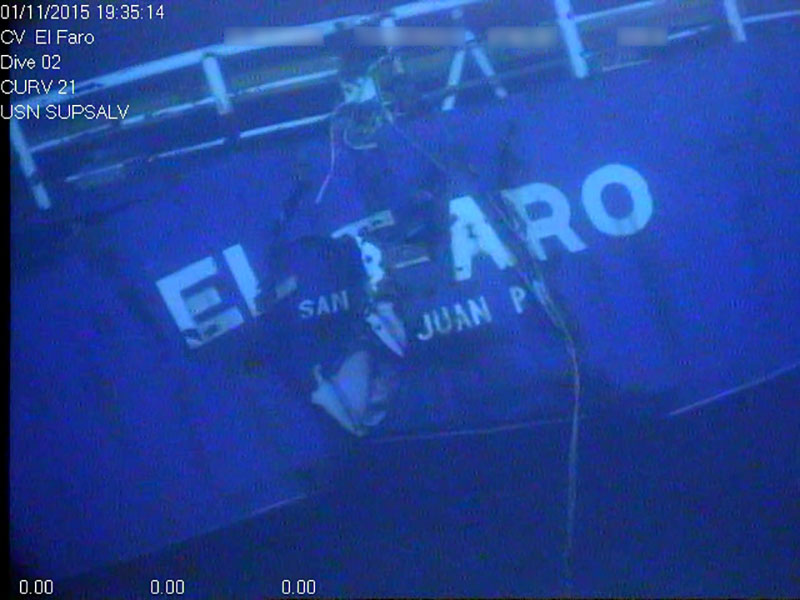A National Transportation Safety Board investigation of the El Faro sinking pointed to the captain’s navigation decisions and inaccurate weather information as leading factors in how the 790’ roll-on/roll-off containership was overtaken by Hurricane Joaquin.
Thirty-three crewmembers perished in the Oct. 1, 2015, sinking off the Bahamas, the worst U.S. maritime disaster in 30 years. The NTSB findings, discussed by staff and board members in Washington, D.C., Tuesday, closely track those of a Coast Guard marine board of inquiry issued last Oct. 1, the two-year anniversary of the sinking.
Among 70 findings and 50 safety recommendations emerging from its $5.8 million investigation, the NTSB identified six major safety issues. Beside Capt. Michael Davidson’s actions – based in part on hours-old weather forecasts that inaccurately predicted the hurricane’s path – the investigators said bridge team management, oversight by owner Tote Maritime, damage control plans and obsolete open lifeboats topped their list.
Sailing on its weekly service from Jacksonville, Fla., to San Juan, Puerto Rico, the El Faro departed just as Joaquin was growing to hurricane strength. Weather forecast packages received by the El Faro crew the day before the sinking projected the storm would take a sharp northward turn before reaching the Bahamas, said Brian Young, the chief investigator.
Davidson accordingly steered to the west of San Salvador in the Bahamas, looking to put more distance between his ship and the predicted track, said Young. In the hours that followed, mates suggested changing course, including farther west into the Old Bahamas Channel, but Davidson kept to his plan possibly relying on a weather information packet that had been 12 hours old when he received it.
“This course put them directly in the path of the hurricane,” Young added.
In technical presentations and answering questions from board members, NTSB staff talked in detail about the cascade of events that followed: waves entering the second deck and down flooding through an open scuttle into a cargo hold, a list to starboard that Davidson tried to correct by turning, then a list to port. That list tilted the engine lube oil intakes out of the oil sump, causing them to lose suction -- and ultimately shut down the engine.
The ship lost speed, then all power, leaving it adrift before the seas. At 7:06 a.m. Davidson called the Tote office to tell them of the emergency, and at 7:29 a.m. the abandon ship alarm sounded.
The NTSB's recommendations include many of those cited by the Coast Guard, including mandatory high-water alarms in cargo holds, bridge indicator lights to indicate when hatches and scuttles are open or closed, and modern enclosed lifeboats.
Like the Coast Guard report, the NTSB also faults the Alternative Compliance Program under which the El Faro was inspected annually by classification society surveyors, backed up by Coast Guard examiners. The NTSB noted the same shortcomings in the program, including a lack of qualifications for examiners, and the Coast Guard’s own findings that ships under the ACP were found to have serious deficiencies.





